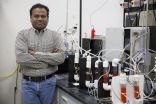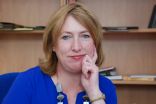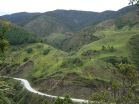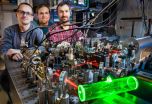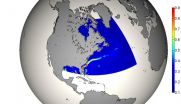(Press-News.org) GAINESVILLE, Fla. --- Buck Rogers surely couldn't have seen this one coming, but at NASA's request, University of Florida researchers have figured out how to turn human waste -- yes, that kind -- into rocket fuel.
Adolescent jokes aside, the process finally makes useful something that until now has been collected to burn up on re-entry. What's more, like so many other things developed for the space program, the process could well turn up on Earth, said Pratap Pullammanappallil, a UF associate professor of agricultural and biological engineering.
"It could be used on campus or around town, or anywhere, to convert waste into fuel," Pullammanappallil said.
In 2006, NASA began making plans to build an inhabited facility on the moon's surface between 2019 and 2024. As part of NASA's moon-base goal, the agency wanted to reduce the weight of spacecraft leaving Earth. Historically, waste generated during spaceflight would not be used further. NASA stores it in containers until it's loaded into space cargo vehicles that burn as they pass back through the Earth's atmosphere. For future long-term missions, though, it would be impractical to bring all the stored waste back to Earth.
Dumping it on the moon's surface is not an option, so the space agency entered into an agreement with UF to develop test ideas.
Pullammanappallil and then-graduate student Abhishek Dhoble accepted the challenge.
"We were trying to find out how much methane can be produced from uneaten food, food packaging and human waste," said Pullammanappallil, a UF Institute of Food and Agricultural Sciences faculty member and Dhoble's adviser. "The idea was to see whether we could make enough fuel to launch rockets and not carry all the fuel and its weight from Earth for the return journey. Methane can be used to fuel the rockets. Enough methane can be produced to come back from the moon."
NASA started by supplying the UF scientists with a packaged form of chemically produced human waste that also included simulated food waste, towels, wash cloths, clothing and packaging materials, Pullammanappallil said. He and Dhoble, now a doctoral student at the University of Illinois, ran laboratory tests to find out how much methane could be produced from the waste and how quickly.
They found the process could produce 290 liters of methane per crew per day, all produced in a week, Pullammanappallil said.
Their results led to the creation of an anaerobic digester process, which kills pathogens from human waste, and produces biogas -- a mixture of methane and carbon dioxide by breaking down organic matter in waste.
In earth-bound applications, that fuel could be used for heating, electricity generation or transportation.
The digestion process also would produce about 200 gallons of non-potable water annually from all the waste. That is water held within the organic matter, which is released as organic matter decomposes. Through electrolysis, the water can then be split into hydrogen and oxygen, and the astronauts can breathe oxygen as a back-up system. The exhaled carbon dioxide and hydrogen can be converted to methane and water in the process, he said.
INFORMATION:
The study was published last month in the journal Advances in Space Research.
DESPITE a sequence of stellar performances by Britain's female athletes and team game players, coverage of women's sport in the Press still occupies a fraction of the space given to men, according to University of Huddersfield lecturer Deirdre O'Neill, who has analysed thousands of articles in newspapers that she describes as a "football-saturated boyzone".
One side effect of this marginalisation of women's sport is that girls - with fewer role models to admire - are much less likely to take part themselves. They leave school half as active as young men, leading to potential ...
Bioengineers at the University of California, San Diego have discovered that mouse embryos are contemplating their cellular fates in the earliest stages after fertilization when the embryo has only two to four cells, a discovery that could upend the scientific consensus about when embryonic cells begin differentiating into cell types. Their research, which used single-cell RNA sequencing to look at every gene in the mouse genome, was published recently in the journal Genome Research. In addition, this group published a paper on analysis of "time-course"single-cell data ...
Latest research on the oldest surviving rock art of Southeast Asia shows that the region's first people, hunter-gatherers who arrived over 50,000 years ago, brought with them a rich art practice.
Published this week in the archaeological journal Antiquity, the research shows that these earliest people skilfully produced paintings of animals in rock shelters from southwest China to Indonesia. Besides these countries, early sites were also recorded in Thailand, Cambodia and Malaysia.
Griffith University Chair in Rock Art Professor Paul Taçon led the research which ...
A Brigham and Women's Hospital-led team has identified a long sought-after partner for a key immune protein, called TIM-3, that helps explain its two-faced role in the immune system -- sometimes dampening it, other times stimulating it. This newly identified partner not only sheds light on the inner workings of the immune system in diseases such as HIV, autoimmunity, and cancer, but also provides a critical path toward the development of novel treatments that target TIM-3. The researcher's findings appeared last month in the journal Nature.
"There has been a lot of confusion ...
Conservationists are always looking for ways to halt the pace of deforestation in tropical rainforests. One approach involves recultivating abandoned agricultural land. An international team* investigating this concept has just published its findings in Nature Communications. Working in the mountainous regions of Ecuador, the researchers found afforestation and intense pasturing to be particularly effective, clearly increasing the environmental and economic value of abandoned farmlands.
Every year, 130,000 square kilometers of rainforest disappear from the face of the ...
This news release is available in German.
A drunken sailor staggers onto a square with lots of streetlamps on it. Sometimes he will run into one of the lamps, change his direction and keep moving. Does the time he spends on this square depend on the number of streetlamps? The surprising answer is: no.
No matter whether there is a streetlamp on every square meter or whether the distance between the lamps is large: on average, the drunken sailor will always spend the same amount of time on the square. Calculations at the Vienna University of Technology (TU Wien) ...
Neither quantum computers nor quantum cryptography will become prevalent technologies without memory systems able to manipulate quantum information easily and effectively. The Faculty of Physics at the University of Warsaw has recently made inroads into popularizing quantum information technologies by creating an atomic memory with outstanding parameters and an extremely simple construction.
Following years of tests in physics laboratories, the first quantum technologies are slowly emerging into wider applications. One example is quantum cryptography - an encryption ...
The ocean is undergoing global changes at a remarkable pace and we must change with it to attain our best possible future ocean, warns the head of The University of Western Australia's Oceans Institute.
One of the global leaders in ocean science, Professor Carlos Duarte has shared his insights on the future of the world's oceans in a paper published in the international open-access journal Frontiers in Marine Science.
In the paper Professor Duarte explains the grand challenge researchers face in addressing global change and the future state of the ocean.
"The ocean ...
This news release is available in German. Just four months after the final data package from the GOCE satellite mission was delivered, researchers are laying out a rich harvest of scientific results, with the promise of more to come. A mission of the European Space Agency (ESA), the Gravity Field and Steady-State Ocean Circulation Explorer (GOCE) provided the most accurate measurements yet of Earth's gravitational field. The GOCE Gravity Consortium, coordinated by the Technische Universität München (TUM), produced all of the mission's data products including ...
The value of a piece of chocolate cake can change. Someone who happens to be on a diet is more likely to choose a fruit dessert and judge the calorie-laden cake as unhealthy. Previous studies have shown that a specific network in the brain is active when a person must decide between various choices that vary depending on context. They emphasize the interaction between neurons in two brain areas of the prefrontal cortex - the controlling area on the front side of the brain.
Prefrontal cortex shows increased activity in all decisions
Sarah Rudorf and Todd Hare of the ...
